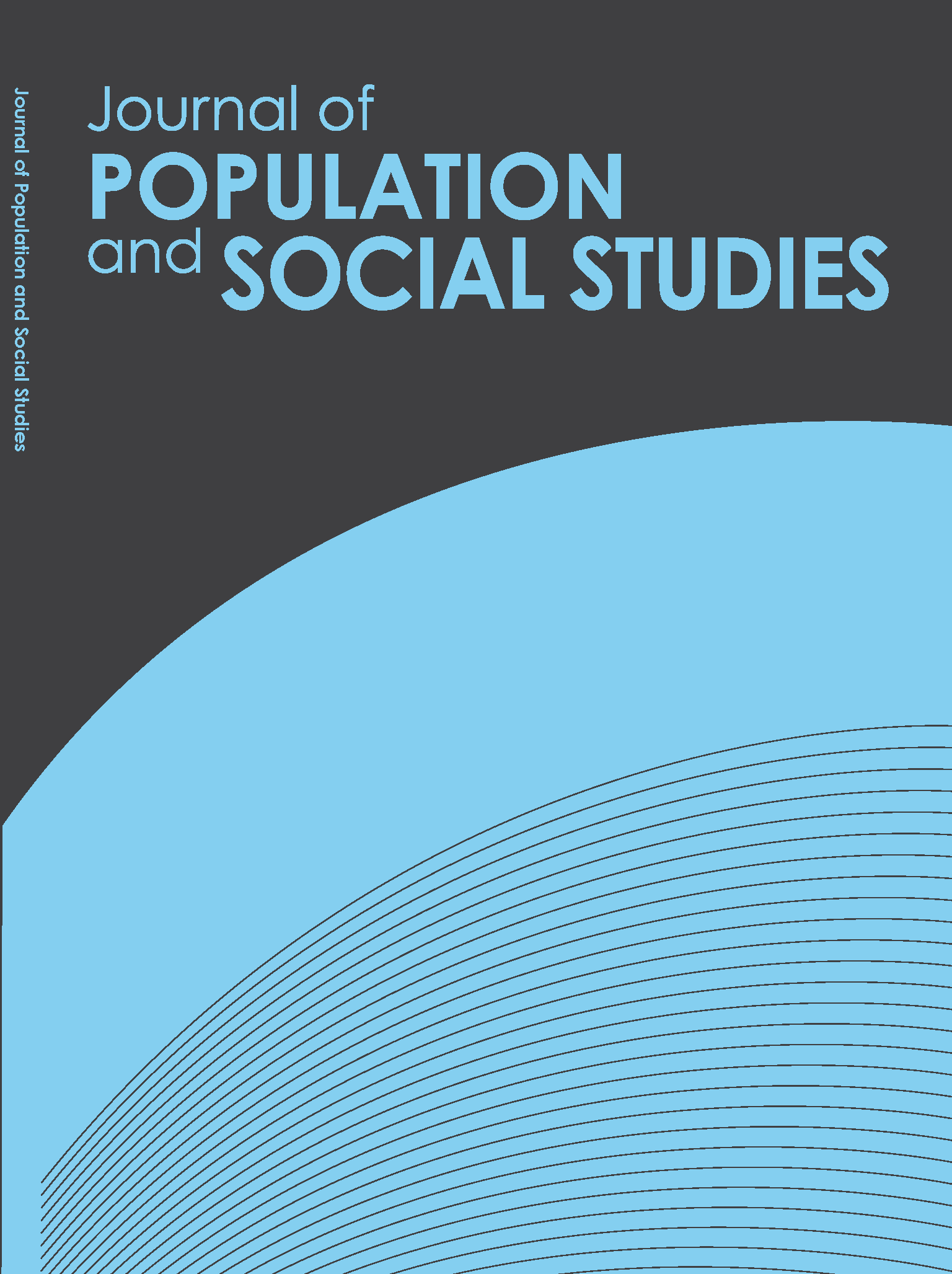In-Migration and Return Migration to Cities in Northern Ontario, Canada: Benefits by City Size in the Context of Today’s Knowledge Economy
Main Article Content
Abstract
By examining the geography of in-migrants and return migrants to Canada’s Census Metropolitan Areas (CMAs) and Census Agglomerations (CAs), this paper compares and contrasts migration patterns of Northern Ontario’s large, medium, and small cities. Results are examined within the foundations of ‘brain circulation’ and ‘institutionalism’ theories about migration. Findings show that large cities in Northern Ontario, though historically dependent upon raw resources, are in a more advantageous position moving forward in today’s knowledge economy. Large cities attracted a higher percentage of inter-regional migrants with higher skills and education in the late 1990s and early 2000s, especially when compared to small cities. Less expected were results regarding medium cities, especially North Bay and Sault Ste. Marie. The study reveals how these cities rival large cities in their appeal to inter-regional migrants with high skills and education, so significant in today’s knowledge economy.
Article Details
References
Amin, A. (2001). Moving on: Institutionalism in economic geography. Environment and Planning A, 33, 1237-1241.
Atkins, M. (2009, February 25). Northern Ontario: between a rock and a hedge. Northern Ontario Business. Retrieved from http://www.northernontariobusiness.com/columns/atkins/Northern-Ontario;-between-a-rock-and-a-hedge.aspx
Beckstead, D. & Vinodrai, T. (2003). Dimensions of occupational changes in Canada’s knowledge economy, 1971-1996. (The Canadian Economy in Transition Research Paper Series. Catalogue No. 11-622-MIE2003004). Analytical Studies Branch. Ottawa: Statistics Canada.
Chui, T., Tran, K. & Maheux, H. (2007). Immigration in Canada: A portrait of the foreign-born population, 2006 Census. Ottawa: Statistics Canada.
Costante, K. (2008). Sudbury booms and bust cycles. Northern Ontario Business. Retrieved from http://www.northernontariobusiness.com/press-releases/Sudbury-boom-and-bust-cycles.aspx
Drucker, P. (1969). The age of discontinuity: Guidelines to our changing society. New York: Harper and Row.
Hodgson, G.M. (2006). What are institutions? Journal of Economic Issues, 40, 2-4.
Kuznetsov, Y. (2006). Diaspora networks and international migration of skills: How countries can draw on their talent abroad. New York: WBI Development Studies.
Martin, R., & Florida, R. (2009). Ontario in the creative age. Toronto: Martin Prosperity Institute, University of Toronto Rotman School of Management. Retrieved from http://martinprosperity.org/media/pdfs
Organization for Economic Co-operation and Development (OECD). (2005). The measurement of scientific and technological activities: guidelines for collecting and interpreting innovation data: Oslo manual (3rd ed). Paris: Organization for Economic Co-operation and Development,
Ontario Ministry of Northern Development and Mines. (2008). Northwestern Ontario: Preparing for change Northwestern Ontario economic facilitator report. Toronto: Ministry of Northern Development and Mines.
Ontario Ministry of Energy and Infrastructure. (2009). Proposed growth plan for Northern Ontario. Toronto: Ministry of Energy and Infrastructure.
Peck, J. (2005). Economic sociologies in space. Economic Geography, 81, 127-176.
Robinson, D. (2008). “Assessing the impact of jobs losses on small communities.” Northern Regional Conference of the Dispute Resolution Services of the Ontario Ministry of Labour. Sudbury, Ontario. March 19, 2008. Speech.
Saxenian, A. (1994). Regional advantage: Culture and competition in Silicon Valley and Route 128. Cambridge, MA: Harvard University Press.
Saxenian, A. (2002). The Silicon Valley connection: Transnational networks and regional development in Taiwan, China and India. Science Technology and Society, 7, 117-149.
Saxenian, A. (2006). The new Argonauts: Regional advantage in a global economy. Cambridge, MA: Harvard University Press.
Southcott, C. (2002a). Mobility and migration in Northern Ontario. (2001 Census Research Paper Series: Report #4). Northern Ontario Local Training and Adjustment Boards.
Southcott, C. (2002b). An aging population in Northern Ontario. (2001 Census Research Paper Series: Report #3. Northern Ontario Local Training and Adjustment Boards.
Southcott, C. (2002c). Youth out-migration in Northern Ontario. (2001 Census Research Paper Series: Report #2). Northern Ontario Local Training and Adjustment Boards.
Southcott, C. (2002d). Population change in Northern Ontario: 1996 to 2001. (2001 Census Research Paper Series: Report #1). Northern Ontario Local Training and Adjustment Boards.
Southcott, C. (2006). The North in numbers: a demographic analysis of social and economic change in Northern Ontario. Thunder Bay, ON: Lakehead University, Centre for Northern Studies Press.
Southcott, C. (2007a). Youth out-migration trends in Northern Ontario: 2001 to 2006. (2006 Census Research Paper Series: Report #2). Northern Ontario Local Training and Adjustment Boards.
Southcott, C. (2007b). Migration and mobility trends in Northern Ontario. (2006 Census Research Paper Series: Report #4). Thunder Bay: Local Boards of Northern Ontario.
Statistics Canada. (1991). 1991 public use microdata file on individuals. User Documentation. Ottawa: Statistics Canada.
Statistics Canada. (1996). 1996 public use microdata file on individuals. User Documentation. Ottawa: Statistics Canada.
Statistics Canada. (2001a). 2001 public use microdata file on individuals. User Documentation. Ottawa: Statistics Canada.
Statistics Canada. (2001b). National Occupation Classification for Statistics, 2001. Ottawa: Ministry of Industry.
Statistics Canada. (2006). 2006 public use microdata file on individuals. User Documentation. Ottawa: Statistics Canada.
Statistics Canada. (2007). Mobility Status 5 Years Ago (9), Mother Tongue (8), Age Groups (16) and Sex (3) for the Population Aged 5 Years and Over of Canada, Provinces, Territories, Census Metropolitan Areas and Census Agglomerations, 2006 Census. (Catalogue number 97-556-XCB2006006).
Statistics Canada (2014). Population by year, by province and territory Retrieved from http://www.statcan.gc.ca/tables-tableaux/sum-som/l01/cst01/demo02a-eng.htm
Sudol, S. (2010, April 14). The ring of fire and the rebirth of Ontario mining. Northern Ontario Life. Retrieved from http://www.northernlife.ca/news/columns/guests/mining150410.aspx
Wong, D., Monrad, S., Jackson, D., & Miller, S. (1999). High technology occupations in British Columbia. Victoria, BC: BC Stats, Government of British Columbia.


